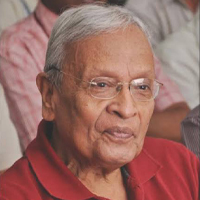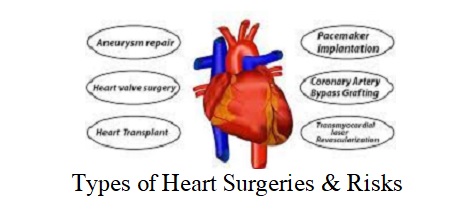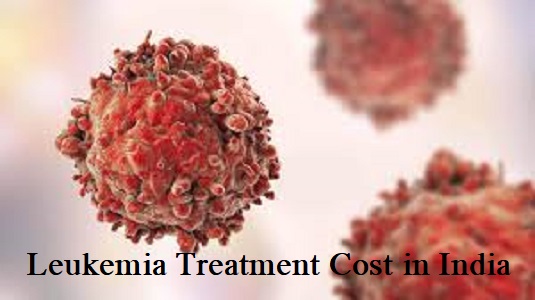Leukemia – Treatment, Cost, Types, Symptoms, and Diagnosis
Leukemia is a type of cancer that originates in bone marrow. It is the 11th most common cause of cancer-related illness and the 10th leading cause of death in the world. Leukemia can be identified in the body by the fast growth of abnormal white blood cells. These abnormal white blood cells overcrowd the normal blood cells, reducing the body’s ability to fight infections. We are going to discuss about leukemia treatment in detail.
Leukemia does not form any solid tumor in the body like other cancers. It overproduces immature white blood cells that do not function correctly. There are different types of leukemia that can affect both children and adults. Leukemia can be divided into four types:
- acute lymphoblastic leukemia (ALL),
- acute myeloid leukemia (AML),
- chronic lymphocytic leukemia (CLL), and
- chronic myeloid leukemia (CML).
The prevalence of leukemia in the United States is high, with an estimated 1,297,027 people living with or recovering from this blood cancer. Childhood acute lymphoblastic leukemia (cALL) is on the rise, particularly among children aged 3 to 5 in West and Southern Africa. Acute myeloid leukemia (AML) is also common in male children aged 5-14. Unfortunately, the prognosis remains poor due to various medical and social factors. People looking for an effective cure for leukemia can find innovative and cost-efficient leukemia treatments in India.
Development of Leukemia in the body
Leukemia begins in the bone marrow (the most important center for blood cell production within the bones). The development of leukemia process begins with hematopoietic stem cells, which can transform into red blood cells, white blood cells, or platelets.
- Myeloid cells produce red blood cells, platelets, and some white blood cells such as basophils, eosinophils, and neutrophils.
- Lymphoid cells develop into specific white blood cells known as lymphocytes and natural killer cells.
However, in leukemia, this systematic process is interrupted. Leukemia cells are abnormal blood cells that multiply uncontrollably. These abnormal cells proliferate fast and take over the bone marrow space, preventing the growth of healthy blood cells. As a result, the body’s ability to create normal red blood cells, white blood cells, and platelets suffers, leading to the typical signs and problems associated with leukemia.
Symptoms of Leukemia
Leukemia symptoms vary based on the type and stage of the disease. Some common signs and symptoms include:
- Fatigue: Persistent tiredness and weakness
- Fever, Chills, and Night Sweats
- Infections
- Unusual Weight Loss
- Bruising and Bleeding: Easy bruising, bleeding gums, nosebleeds, and tiny red spots on the skin (petechiae) due to disruptions in blood clotting.
- Enlarged Lymph Nodes, Liver, or Spleen
- Bone Pain
- Headaches
- Anemia Symptoms: Paleness, shortness of breath, rapid heartbeat, and weakness.
Classification of Leukemia
Speed of Progression:
- Acute Leukemia: In acute leukemia, abnormal blood cells (blasts) are young and grow fast, resulting in rapid disease progression. Immediate and intensive treatment is required. It is more common in children.
- Chronic Leukemia: Chronic leukemia grows slowly that means the abnormal blood cells multiply or increase at a slower rate. The condition progresses gradually, and in some cases, no symptoms appear for years. Adults are more likely to suffer from it.
Type of Blood Cell Affected:
- Lymphocytic Leukemia: Lymphocytes, which are white blood cells important in the immune system, are affected by this type.
- Myelogenous Leukemia: Myelogenous leukemia starts from myeloid cells, which give rise to red blood cells, white blood cells (excluding lymphocytes), and platelets.
Common types of Leukemia
Major types of leukemia are:
- Acute Lymphocytic Leukemia (ALL): This is the most prevalent type of leukemia in children, but it can also affect adults.
- Acute Myelogenous Leukemia (AML): A kind of leukemia that occurs in both children and adults, with AML being the most common acute leukemia in adults.
- Chronic Lymphocytic Leukemia (CLL): The most prevalent type of chronic leukemia is in adults, which does not require urgent treatment and remains asymptomatic for years.
- Chronic Myelogenous Leukemia (CML): It primarily affects adults and progresses slowly, often with a long period of asymptomatic growth.
- Other Rare Types: Hairy Cell Leukemia, Myelodysplastic Syndromes, and Myeloproliferative Disorders.
Causes of Leukemia
Leukemia is caused by mutations in the DNA of blood cells, which causes uncontrolled growth of cells. While the causes are often unknown, multiple factors such as radiation, toxins, family history, or genetic diseases can increase the risk. These factors do not cause leukemia directly, but they can produce genetic changes that affect blood cell control, ultimately crowding out healthy cells in bone marrow and blood.
People who are at Risk
- Age: People aged 65 to 74 are more likely to get leukemia. The risk of leukemia rises with age, especially after the age of 60.
- Gender: It has a larger effect on people who were born male at birth and Caucasians/whites.
- Previous Cancer Treatment: Prior cancer treatment, such as radiation or chemotherapy, can increase the risk.
- Smoking: Smoking or being exposed to secondhand smoke increases the risk of developing acute myelogenous leukemia.
- Exposure to Industrial Chemicals: Chemicals such as benzene and formaldehyde may enhance the risk of leukemia.
- Genetic Disorders: Certain genetic diseases, such as Down syndrome, can increase risk of leukemia.
- Family History: Some forms of leukemia can be passed down in families, but this does not guarantee that everyone will develop it.
Diagnosis of Leukemia
- Physical Examination and History: The doctor will begin with a physical examination and ask about the patient’s medical history. They’ll search for symptoms like pale skin (which indicates anemia), swollen lymph nodes, and liver and spleen enlargement.
- Blood Tests: Blood tests, such as a Complete Blood Count (CBC), are essential in the diagnosis procedure. The CBC offers information about the amount and maturation of various blood cells. A blood smear testmay also be performed to identify any abnormal or immature cells. Some kinds of leukemia can also cause the discharge of leukemia cells into the bloodstream, which can be detected with these tests.
- Bone Marrow Tests: A bone marrow biopsy and aspiration are critical in confirming a leukemia diagnosis. During these operations, a small sample of bone marrow is extracted, usually from the pelvic bone, with a thin needle. The obtained sample is afterwards transported to a laboratory for analysis. These tests help in determining the type of leukemia and its severity.
- Genetic Tests: A genetic test may be performed to look for specific gene and chromosome changes associated with leukemia.
- Imaging Tests: Imaging tests such as CT scans, MRI scans, or PET scans may be required in some situations to determine whether leukemia has spread to other organs or tissues.
- Lumbar Puncture: A lumbar puncture, often known as a spinal tap, is a procedure that collects and tests cerebrospinal fluid (CSF) from the brain and spinal cord. This test determines whether leukemia has progressed to the central nervous system.
Treatment Options for Leukemia
Several factors affect leukemia treatment, including the type of leukemia, its stage, the patient’s age, overall health, and whether the cancer has migrated to other parts of the body, such as the central nervous system. The following are best leukemia treatments options available in India:
- Chemotherapy: Chemotherapy is the most common treatment for leukemia. It involves the use of medications to target and kill leukemia cells. Patients may be given a single medicine or a combination of drugs, depending on the type of leukemia. These medications can be taken orally (as pills) or intravenously (injected into a vein).
- Targeted Therapy: Targeted treatments address specific defects in leukemia cells. Targeted therapy can cause cancer cells to die by preventing these irregularities.
- Radiation Therapy: Radiation therapy uses high-energy X-rays or beams to harm and stop the growth of leukemia cells. It can be sent to specific parts of the body where leukemia cells are concentrated or to the entire body.
- Bone Marrow Transplant: A stem cell transplant, also referred to as a bone marrow transplant, seeks to replace damaged bone marrow with healthy, leukemia-free stem cells. High-dose chemotherapy or radiation therapy is used to remove leukemia-producing bone marrow, followed by an infusion of blood-forming stem cells from a donor or the patient’s own body.
- Immunotherapy: Immunotherapy fights leukemia by using the patient’s immune system. It assists the immune system in recognizing and attacking cancer cells. Immunotherapy prevents leukemia cells from hiding from the immune system.
- Engineered Immune Cells (CAR-T Cell Therapy): CAR-T cell therapy is a specialized treatment in which the patient’s own immune cells, specifically T cells, are modified to target and destroy leukemia cells.
- Clinical Trials: Clinical trials provide experimental medicines and new approaches to leukemia treatment. While clinical trials can provide access to advanced medicines, it is essential to consider potential advantages and risks with a doctor.
Survival Rate of Leukemia
- Chronic Lymphocytic Leukemia (CLL): 5-year survival rate of 88.2%.
- Acute Lymphocytic Leukemia (ALL): 5-year survival rate of 68.9%.
- Chronic Myeloid Leukemia (CML): 5-year survival rate of 71.6%.
- Acute Myeloid Leukemia (AML): 5-year survival rate of 30.7%.
- Acute Monocytic Leukemia (AML-M5): 5-year survival rate of 24.7%.
Survival rates for different types of leukemia vary. In addition, age has an important effect on outcomes, with younger patients having a better probability of survival than those aged 75 and older.
Leukemia Treatment Cost in India
Leukemia treatment costs in India are significantly lower than in developed countries. Approximate leukemia treatment cost in India is as follows:
- Chemotherapy: Starts at $1100 per session.
- Radiation Therapy: Begins at $2,400 .
- Targeted Therapy: Starting at $5,000 per cycle.
- Bone Marrow Transplant: Starts at $22,000.
Hospital room type, disease severity, complications, longer hospital stays, and accommodation during follow-up visits for non-local patients are all factors related to the costs of leukemia treatment in India. India’s cost-effective healthcare services make it a popular option for leukemia treatment, providing high-quality care at a fraction of the cost compared to developed nations.
Best Hospital for Leukemia Treatment in India
India provides world-class medical facilities at reasonable prices for leukemia treatment. Best Hospital for Leukemia Treatment in India offers skilled oncologists, modern technology, and a variety of imaging procedures such as CT scans, MRIs, and PET scans for accurate diagnosis. These facilities are well-equipped to treat blood cancers such as multiple myeloma, lymphoma, etc. India stands out as a favored choice for those seeking quality and cost-effective medical care due to its reasonable costs for leukemia cancer treatment and bone marrow transplantation.
- Aakash Healthcare Super Specialty Hospital
- Max Super Specialist Hospital Saket
- Fortis Memorial Research Institute
- Artemis Hospital Gurgaon
- BLK Super Specialty Hospital
- Sanar International Hospital Gurugram, Delhi NCR
- Indraprastha Apollo Hospital
- Medanta – The Medicity Hospital
- Marengo Asia Hospital, Gurugram
- Max Super Specialist Hospital Saket
Top Doctors for Leukemia Treatment in India
Top Doctors for Leukemia Treatment in India are highly skilled oncologists who specialize in the diagnosis and treatment of various types of leukemia. They are well-known for their experience in using advanced treatment procedures and offering compassionate care to leukemia patients, making them the best leukemia doctors in India.
- Rahul Naithani – Max Super Specialty Hospital Saket
- Shishir Seth – Indraprastha Apollo Hospitals
- Gaurav Kharya – Indraprastha Apollo Hospitals
- Nitin Sood – Medanta The Medicity
- Aniruddha Dayama – Fortis Memorial Research Institute
- Rahul Bhargava – Fortis Memorial Research Institute, Gurgaon
- Subodh Chandra Pandey – Artemis Hospital
- Ramandeep Singh Arora – Max Super Specialty Hospital Saket
- Sachin Jadhav – BGS Gleneagles Global Hospital Bangalore
Contact Form
Attach Medical Report
Top Doctors & Surgeons in India
Why Choose Us

Personalized Care
24x7 Supports
Top NABH and JCI accredited Hospitals
Free Cost Estimation & Medical Opinion from Specialist
Get Free Tele/Video Consultation
Visa and Traveling Assistance
Post-surgery with Assistance in Follow-ups














